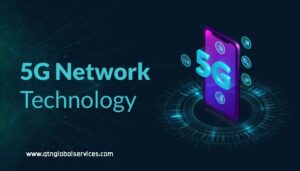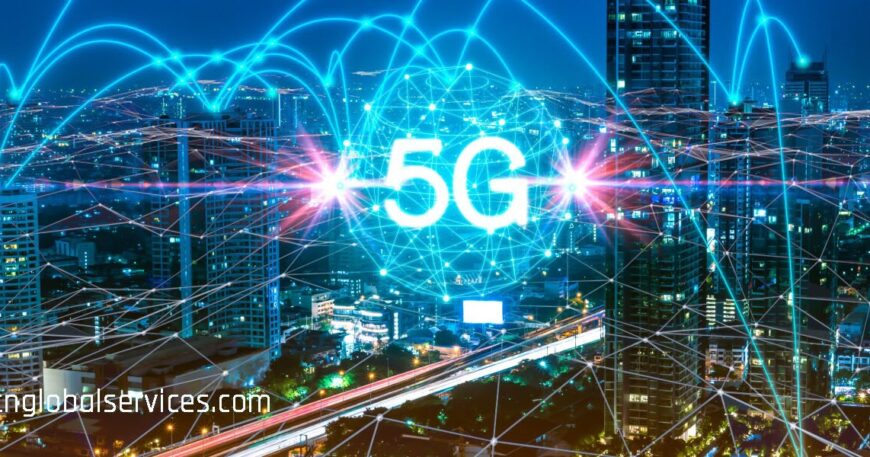The advent of 5G technology is poised to revolutionize various industries, and the IT sector is no exception. With its remarkable speed, low latency, and capacity for connecting multiple devices simultaneously, 5G is set to bring about a paradigm shift in how IT services are delivered and experienced. In this article, we’ll delve into some of the key benefits that 5G technology brings to the IT industry.
Table of Contents
- Introduction
- Unprecedented Speed and Data Transfer
- Ultra-Low Latency
- Enhanced IoT Connectivity
- Edge Computing Advancements
- Improved Cloud Services
- Transformative Remote Work
- Real-time Collaboration and Communication
- Accelerated AI and Machine Learning
- Immersive Augmented and Virtual Reality
- Conclusion
- Frequently Asked Questions (FAQs)

Unprecedented Speed and Data Transfer
One of the most significant benefits of 5G technology is its exceptional speed. With speeds that can be up to 100 times faster than 4G, 5G enables lightning-fast data transfer. This speed enhancement is a game-changer for the IT industry, as it facilitates quicker downloading and uploading of large files, data synchronization, and seamless streaming of high-resolution content.
Ultra-Low Latency
5G technology boasts ultra-low latency, which refers to the minimal delay in data transmission. This is particularly crucial for real-time applications like video conferencing, online gaming, and remote surgeries. The reduced latency ensures smooth and responsive interactions, enhancing user experiences across various IT services.
Enhanced IoT Connectivity
The Internet of Things (IoT) is expanding rapidly, with billions of connected devices anticipated in the coming years. 5G’s ability to connect a massive number of devices simultaneously will be instrumental in managing and utilizing IoT data effectively. This connectivity boost will further drive innovations in smart homes, smart cities, and industrial automation.
Edge Computing Advancements
5G’s low latency and high bandwidth pave the way for edge computing to flourish. Edge computing involves processing data closer to its source, reducing the need to transmit vast amounts of data to central servers. This approach enhances real-time data analysis and decision-making, critical for applications like autonomous vehicles and industrial monitoring.

Improved Cloud Services
Cloud computing is a cornerstone of the IT industry, and 5G enhances its capabilities. The improved speed and connectivity enable faster access to cloud resources, seamless data synchronization, and enhanced scalability. This is particularly beneficial for businesses relying on cloud-based services for storage, computation, and collaboration.
Transformative Remote Work
The global shift towards remote work has been accelerated by the COVID-19 pandemic. 5G technology enables smoother remote work experiences, supporting video conferencing, virtual desktops, and secure access to corporate networks. This level of connectivity can blur the lines between office and remote work, enabling seamless collaboration.
Real-time Collaboration and Communication
5G’s low latency and high-speed connectivity redefine collaboration and communication. Video conferencing, VoIP calls, and real-time document editing become more fluid and natural. This is especially valuable for geographically dispersed teams working on projects that demand instant communication and feedback.
Accelerated AI and Machine Learning
Artificial Intelligence (AI) and Machine Learning (ML) require substantial computational power and quick access to data. 5G’s high-speed connectivity accelerates the training and deployment of AI and ML models, enabling real-time analysis and decision-making. This advancement has implications for industries like healthcare, finance, and manufacturing.
Immersive Augmented and Virtual Reality
5G technology unlocks the full potential of augmented reality (AR) and virtual reality (VR) applications. The high speeds and low latency of 5G ensure seamless streaming of immersive experiences. This has applications in gaming, education, training simulations, and even remote assistance.

Conclusion
The benefits of 5G technology in the IT industry are far-reaching and transformative. From accelerated data transfer and reduced latency to enabling advanced applications like IoT, AI, and AR/VR, 5G lays the foundation for a more connected, efficient, and innovative IT landscape.
Frequently Asked Questions (FAQs)
Q1: Is 5G technology available everywhere? A: 5G is gradually being rolled out globally, with coverage expanding in various regions. Check with local providers for availability.
Q2: How does 5G impact cybersecurity? A: While 5G enhances connectivity, it’s important to ensure robust cybersecurity measures to protect against potential threats.
Q3: Can 5G replace Wi-Fi for indoor networks? A: 5G offers high speeds, but Wi-Fi is still valuable for local indoor networks due to its convenience and coverage.
Q4: How does 5G affect data privacy? A: 5G itself doesn’t directly impact data privacy, but its increased connectivity highlights the need for strong data protection measures.
Q5: What industries will benefit the most from 5G in the IT sector? A: Industries like healthcare, manufacturing, transportation, and entertainment are poised to benefit significantly from 5G’s capabilities.





